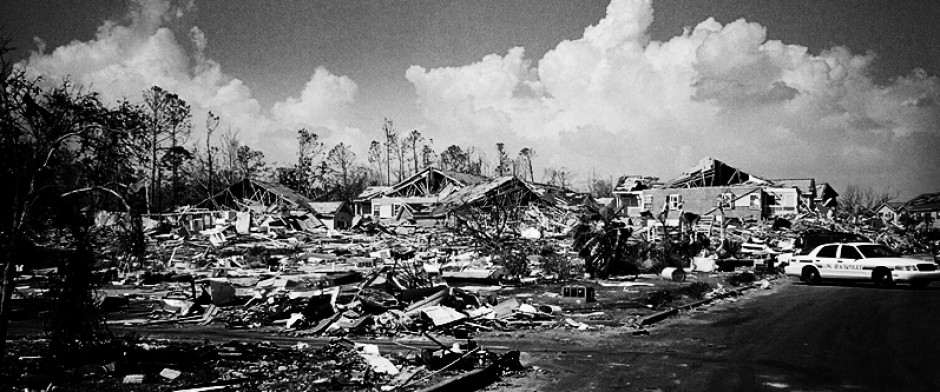I am often asked how an insurgent (a.k.a. guerilla) force could successfully function against a modern police state. The answer to this complex challenge has taken on a mystique akin to the search for the Holy Grail. Many have come to believe that any resistance against these authoritative regimes leveraging the latest in surveillance technology is futile. This conclusion is false. Any modern police state can be successfully confronted and if necessary, overthrown. This is even more likely when a true critical mass of the populace is unified in their demand for the change. However, for those suffering under brutal regimes that were hoping for a simple panacea, I am sorry to disappoint you. This is a highly complicated and daunting operation that involves plans custom tailored to each unique regime. Even then, at the outset of resistance, the odds of success are not good making the endeavor highly risky. Most insurgencies are crushed in their infancies, but like newborns, those insurgencies that can survive for at least a year rapidly turn the tables and with each passing month statistically become more and more likely to succeed. Of those successful struggles against tyranny, one finds commonalities that will be applicable to any guerilla war. One of the most important of these is the use of Distributed Operations (DO).
On Guerilla Warfare, by Mao Tse-Tung, as well as Sun Tzu’s, The Art of War, each in their own way, lay out time tested strategies to successfully carry out warfare. Both directly and indirectly, these strategists stress that a military force should attack the enemy where he is the most vulnerable while taking great measures to avoid being engaged by a superior enemy force. Further, for the guerilla, large-scale decisive engagements are almost exclusively left to a latter conventional phase of the resistance. This is applicable to both conventional military forces as well as guerilla forces. At its core, this is what modern military strategists have dubbed “maneuver warfare.” However, for the guerilla, maneuver warfare alone is insufficient to achieve victory against what is traditionally a far larger and more powerful conventional adversary. The guerilla must also master the use of DO to survive.
Textbook DO is a form of maneuver warfare where small, highly capable units spread out across a large area of operations creating an advantage over an adversary through the deliberate use of separation and coordinated, independent tactical actions. Applied by a conventional military, DO allows small units to punch far above their weight class by bringing to bear highly accurate long-range weapons such as artillery fire and airstrikes against enemy concentrations. For the guerilla, the benefits aren’t derived so much by small units delivering massed accurate fires (which they are unlikely to possess and be able to employ), but rather, by causing the adversary to dissolve concentrations of their forces in order to try to maintain control of regions. For the guerilla, DO exhausts and ultimately overwhelms the adversary by forcing him to defend everywhere against what appears to be widespread guerilla activity. In practice, this means the adversary becomes spread too thin and is unable to effectively defend or respond anywhere. By forcing the adversary to spread himself thin, it creates vulnerabilities where the guerilla is able to achieve temporary tactical superiority over an adversary typically far better armed, trained, and staffed. Through the use of prolonged DO, the guerilla can impose unsustainable financial and manpower costs on even the most well-sourced of adversaries forcing their collapse, capitulation, or withdrawal without ever having to decisively engage the bulk of the adversary’s forces.
I am sure at this point there are plenty of you already saying to yourself that this sounds good in theory, but show me an example where this has worked in the real world. Well, I am glad you asked. If there is a superpower out there, it would have to be the United States, which is the master of a military machine supported by intelligence, surveillance, and reconnaissance capabilities unrivaled in history. In spite of its trillion-dollar military, the US is being whipped by a guerilla force in Afghanistan that for all intents and purposes is about as incompetent as it gets for an enemy. This superpower defeat has been enabled through the determined use of DO. The Taliban, acting semi-autonomously, have forced both NATO and the Afghan government forces to attempt to defend the entire country. This is simply impossible to sustain from either a manpower and/or fiscal perspective. As a result, the Afghan government faced a stark choice. Either cede entire regions to Taliban control or establish small outposts across the country in a futile attempt to impose government control over all areas of Afghanistan. Initially, the government chose the latter resulting in positions sprinkled throughout the country. The Taliban, although initially unable to contest government control in most areas of the country, was able to take advantage of this dispersion and attack the most vulnerable government positions. As the war wore on, the Taliban became very adept at this and could quickly identify, cut-off, and overrun small unsupported government units. The repeated loss of these checkpoints and outposts was not only costly, but demoralizing for the government. In response, the Afghan government was forced to capitulate and pull back forces from most of the outlying provinces in order to consolidate and defend a handful of key centers such as Kabul. This relieved pressure on the Taliban fighters, which allowed them to consolidate their gains. Now, in full control of most provinces, the Taliban are working to cut-off and reduce the last government strongholds and has forced the US to begin what it calls “peace talks.” This is laughable and no one is fooled. The “peace talks” by any measure are simply to hammer out the terms of surrender. The game is over in Afghanistan. The guerilla force proved that successful DO can repulse a superpower. For those feeling helpless, if it can be done in Afghanistan against the full force of NATO, it can be done anywhere.
In intellectual fairness, it is true that DO are not the only reason the Taliban have survived. For example, it is essential for an insurgency to maintain sanctuary, which the Taliban enjoyed in Pakistan. Without this sanctuary, it is unlikely the Taliban would have ever become a lasting insurgent force. Nonetheless, without the use of DO, the Taliban would still have been quickly annihilated. To illustrate this, consider if the Taliban had concentrated all of its forces in one small area of Kandahar to confront the U.S. military. How would it have fared? I would argue it would have been quickly destroyed by overwhelming US firepower. Remember this lesson. If the guerilla force concentrates prematurely, it runs an extremely high risk of early and total annihilation by the superior firepower of a conventional adversary. As such, it is essential to disperse personnel in a manner that they can carry out operations at the times and places of their choosing encompassing as large of an area as possible. In addition, it is important to have insurgents placed in and around key infrastructure and population centers. This has repeatedly proved to be very difficult for a government to suppress because any action the government takes, causes collateral damage and further alienates the population. Government action could be as simply as roadblocks preventing free flow of commerce, which kills revenue and the economy. Cut the funding and you will kill any government.
Still though, Afghanistan is a distant country that is underdeveloped and nothing like a modern country in say Europe or Asia. Many will say for those reasons it does not present a good parallel case study for what one would experience in a first world police state. The argument is warranted, but misses the key point that whether or not you are dealing with insurgents in the mountains of Afghanistan or dissidents in the heavily surveilled urban enclaves of Europe, the merits of DO are consistent. In both developed modern cities and remote mountain enclaves, achieving at least temporary tactical superiority against your adversary is necessary. Both the guerilla and the government seek to achieve this, but the guerilla enjoys the benefit of being able to choose the time and place of attack. By making government forces in a modern city disperse over a large area, the guerilla still effectively wears out, demoralizes, and bankrupts the government force even if a shot is never fired. In fact, it is quite effective in modern societies for the insurgent element to simply disrupt, never crossing into outright rebellion or illegal activity, and still achieve its goals. This is possible by forcing large scale disruption of commerce. Again, cut the funding for a government and you will kill it. In modern high-tech police states, this is even more acute. Even minor disruptions to what amounts to thousands of fragile supply chains can result in catastrophic losses for a modern economy and a rapid break down in the state’s ability to function at a level “acceptable” to the masses. Sustain this for just months and entire cities would be at risk of shutting down and losing control of the population. Further, without money, the massive surveillance apparatus begins to grind to a halt and with it the guerilla begins to gain the ability to freely operate and overwhelm even more objectives. To illustrate this, imagine the government’s ability to control a city like Beijing without electrical power for the millions of cameras, monitoring devices, and data processing centers. Very quickly, through persistent application of DO, even if taking heavy losses, modern spy states prove to be even more vulnerable than their low tech (and lower cost) oppressive peers because of their massive need for constant financial support and functioning infrastructure. In summary, sustained DO as a part of any resistance strategy has proven to work against powerful actors and analysis suggests it would be even more effective against fragile, costly modern police states.
By Guiles Hendrik
January 15, 2020


